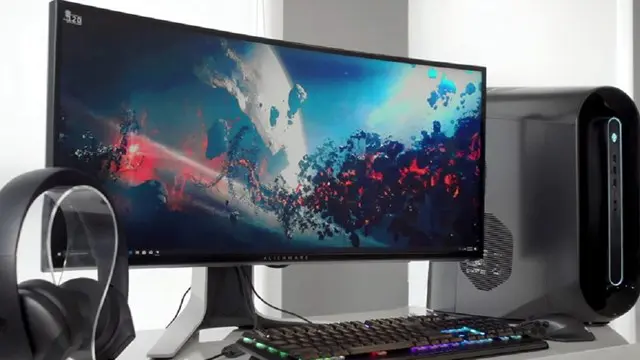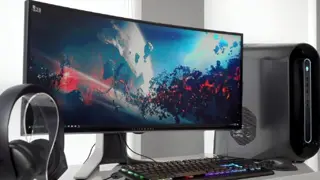
The Complete Computer Basics Guide for Beginners: 2024
Computer Basics, Basic Computer Skills, Microsoft Word, PowerPoint and Excel, Windows 11 Basics, Computer Fundamentals
Sarmad Jadoon
Summary
- Certificate of completion - Free
- Reed Courses Certificate of Completion - Free
Add to basket or enquire
Overview
’Are you new to computers? Looking for something that is good for beginners?
This course is designed to provide a comprehensive introduction to the basics of computers.
It covers topics such as hardware components, operating systems, software applications, and basics of Microsoft Word, Excel and PowerPoint.
It is ideal for those who are new to computers and want to gain a better understanding of how they work.’’
Curriculum
-
Introduction 22:13
-
Computers for Individual Users 26:38
-
Computers for Organizations 26:57
-
A Look Inside a Computer System 16:12
-
Categorizing Computer Hardware 43:20
-
System Software and Application Software 22:43
-
IBM Compatible Keyboard 1:42:55
-
Mouse and Its Variants 22:27
-
Other Ways to Input Data (Other than mouse and keyboard) 35:47
-
Video 1:27:12
-
Printers 17:15
-
Internet and Its History 18:25
-
The World Wide Web 20:25
-
Data Representation in Computers 22:34
-
Microsoft Word Basics 16:11
-
Microsoft PowerPoint Basics 54:35
-
Microsoft Excel Basics 1:07:09
-
Windows 11 26:29
Course media
Description
If you are still unclear about what's the difference between Hardware and Software, memory devices and storage devices, Read Only Memory (ROM) and Random Access Memory (RAM), System Software and Application Software, Input and Output, Data and Information. You are passionate about learning the Layout of an IBM Compatible keyboard and the different groups of keys present in a standard keyboard as well as their purpose. And if you are confused about the various terms such as Hard Disk Drives (HDDs) and Solid-State Drives (SSDs). Also, you absolutely have no clue about what's the difference between a Mainframe Computer and a Minicomputer or a Network Server for that matter. You tend to confuse the terms "Internet" and "World Wide Web" and use them interchangeably. And you are clueless about how a "computer network" relates to "Internet". You want to know about the pointing devices and their different variants. In addition to that you have no idea as to how devices other than primary input devices may be used to input the data. You want study in detail the commonly used output devices and their types. You want to meticulously analyze the various types of storage devices. If some/all of the aforementioned applies to you, then this course is for you. For these and many other interesting topics I am presenting to you my course titled "The Complete Computer Basics Guide for Beginners: 2024". The course also covers the basics of Microsoft Word, Microsoft PowerPoint and Microsoft Excel and the Basics of Windows 11.
This course covers the following topics :
The Computer Defined
Classification of Computers Based on how the data is handled (digital, analog, hybrid)
Personal Computers (Desktop Computers, Laptops, Notebooks, Workstations, Personal Digital Assistants, Tablets, Smartphones)
Computers for Organizations (Mainframe computers, Minicomputers, Network Servers, Supercomputers)
Parts of a Computer System (Hardware, Software, Data, User)
Information Processing Cycle Steps
Hardware Categories (Processing Devices, Memory Devices, Input and Output Devices, Storage Devices, Bus Interconnection)
System Software
Application Software
IBM Compatible Keyboard (Different groups of keys on an IBM Compatible Keyboard their functions)
Keyboard Shortcuts
Mouse and its Variants (Trackpads, Trackpoint, Trackballs)
Devices for the Hand
Optical Input Devices
Audiovisual Input Devices
Monitors Classified Based on Color (Monochrome monitors, Grayscale monitors, Color Monitors) (to be added)
Cathode Ray Tube (CRT) Monitors (to be added)
Flat Panel Monitors (to be added)
Liquid Crystal Display (LCD) Monitors (to be added)
Light Emitting Diode Monitors (to be added)
Comparing Monitors (to be added)
Characteristics of Monitors (to be added)
Graphics Card (Video Controller) (to be added)
Impact Printers and Non-Impact Printers
Laser Printer
Working of a Laser Printer
Internet and Its History
The World Wide Web
Some of Windows 11 Basics (to be added)
Microsoft Word Basics
Microsoft PowerPoint Basics
Microsoft Excel Basics
Data Representation in Computers (Numbering Systems, Bit, Byte and Nibble, Text Codes)
Who is this course for?
Anyone is welcome to take this course. I believe this course will be useful for everyone regardless of his background as computers are being used in almost every discipline.
Requirements
No requirements as such. A basic knowledge about computers is a plus.
Career path
After taking this course students will have improved their understanding of computers. It will certainly help them in one way or the other regardless of the career choices they make. Students will have increased their computer proficiency which is a plus. However, the course in itself cannot guarantee any job placement and is meant for avid computer learners and a mature audience.
Questions and answers
Currently there are no Q&As for this course. Be the first to ask a question.
Certificates
Certificate of completion
Digital certificate - Included
Reed Courses Certificate of Completion
Digital certificate - Included
Will be downloadable when all lectures have been completed.
Reviews
Currently there are no reviews for this course. Be the first to leave a review.
Legal information
This course is advertised on reed.co.uk by the Course Provider, whose terms and conditions apply. Purchases are made directly from the Course Provider, and as such, content and materials are supplied by the Course Provider directly. Reed is acting as agent and not reseller in relation to this course. Reed's only responsibility is to facilitate your payment for the course. It is your responsibility to review and agree to the Course Provider's terms and conditions and satisfy yourself as to the suitability of the course you intend to purchase. Reed will not have any responsibility for the content of the course and/or associated materials.


